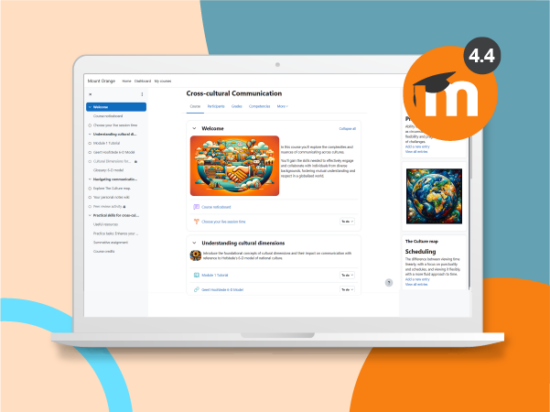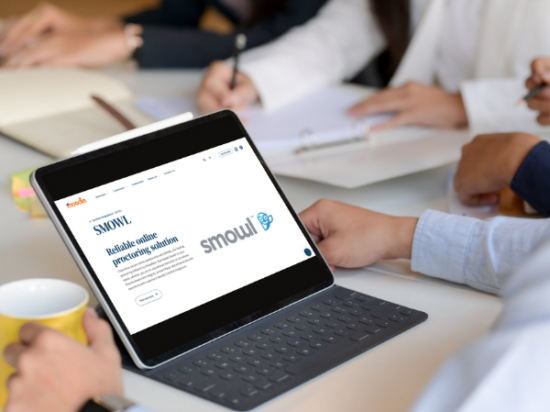UX, or User eXperience, is the process of designing a product that is useful, easy to use, and enjoyable to interact with.
We hear about UX more and more which indicates that the importance of providing a good experience for users for any product is very important.
At MoodleMoot Australia 2016 in Perth last September, Moodle Founder and CEO, Martin Dougiamas highlighted a number of exciting Moodle news – from upcoming new features through to introducing Moodle’s new UX team.
So this week we took the time to speak to Moodle’s lead UX designer, Alberto Corado, about his role (and the role of UX) in Moodle.
Moodle HQ: Thanks for taking the time to talk to us all about UX Al. Let’s start with explaining to us what your role entails? What tasks do you have to do on a regular basis?
Alberto Corado: I am the Lead UX Designer at Moodle HQ, meaning that I am the advocate and voice of UX design within Moodle.
I lead the small UX team at Moodle HQ in conducting ongoing user research and usability testing on future Moodle products and features.
The team and I push ourselves every day to design innovative, intuitive and delightful experiences that address the needs of Moodle users and solve pain points in their lives.
An important aspect of my role during product design and development cycles is to ensure that the UX team is proactively communicating and working closely with Moodle’s team of internal developers and the Moodle community.
Moodle HQ: UX is one of the key considerations for a lot of companies. How would you describe UX?
Alberto Corado: UX stands for user experience. A good UX solves a problem, adds value, and is aesthetically pleasing, unobtrusive and self-explanatory.
For Moodle, this means building an e-learning platform that can be easily navigated, shared and used by every educator and learner worldwide.
Moodle HQ: Why, in your opinion, is UX important, for Moodle and really for any company creating products?
Alberto Corado: The learning management system (LMS) market has changed significantly since Moodle was first founded over 15 years ago. Users have many competing products to choose from and they do not hesitate to switch to another product if they believe it can perform tasks faster, better and with greater ease.
In order for Moodle to stay competitive, it’s imperative that we listen to, understand and empathise with our users and their needs.
In order to continue to grow and innovate, we strive to put Moodle users in the centre of everything we do.
Moodle HQ: How do you create good UX for users for any product, platforms or websites?
Alberto Corado: The process of creating a good UX begins in the “learn phase.” In this phase, the team researches as much as possible about the target user base and the problem we’re trying to solve.
We conduct interviews and administer surveys to gather feedback from existing users.
In addition, we identify or update personas to ensure that UX team members are focused on the same user demographics/behaviours, needs/wants and pain points.
We then create journey maps to identify any gaps in the new or existing user flow.
Finally (and only if available), we collect quantitative data such as usage analytics on the existing product or feature.
Once the team has learned as much as we can, we move onto the “build phase.” Here, as a team, we whiteboard and/or paper sketch our initial assumptions and decide which design to test and validate first.
We then move to low fidelity wireframes and flows to get a better holistic view of the problem. Here, if needed, we add a higher fidelity to the designs.
Lastly, we build out rapid prototypes, which attempt to mimic the final interactivity.
The final phase of creating a good UX is the “test phase,” which involves testing and validating our assumptions to measure the success of the design.
To start this process, a simple test plan is developed. It contains tasks and objectives that are used to measure our tests as scientifically as possible.
We then conduct moderated and/or unmoderated usability tests. These tests are conducted using both automated tools and through face-to-face user sessions. Simple reports and test results are then generated and shared.
This three-phase cycle is repeated in an iterative manner. The end product is a successful UX that solves our users’ problems.
Moodle HQ: How can Moodle users get involved in Moodle’s UX work?
Alberto Corado: At Moodle, we are constantly seeking to improve the user experience. Changes are implemented as a result of user feedback. For this reason, I would consider participation from the Moodle community and Moodle users an incredibly important aspect of UX.
I highly recommend that educators and learners who use Moodle become involved in Moodle’s UX work. They can do so by joining the usability forum on moodle.org. Moodle users can volunteer to participate in surveys, card-sorting activities, usability tests and other research studies.
Thank you, Alberto, for taking the time to chat to us about everything UX.
As Alberto mentioned, we’d love to get Moodlers involved in our UX work. To do that join the usability forum on moodle.org and also follow us on social links below for the latest news on UX and other Moodle updates.
Like Moodle on Facebook.
Follow Moodle on Twitter.
Connect with Moodle on Linkedin.



